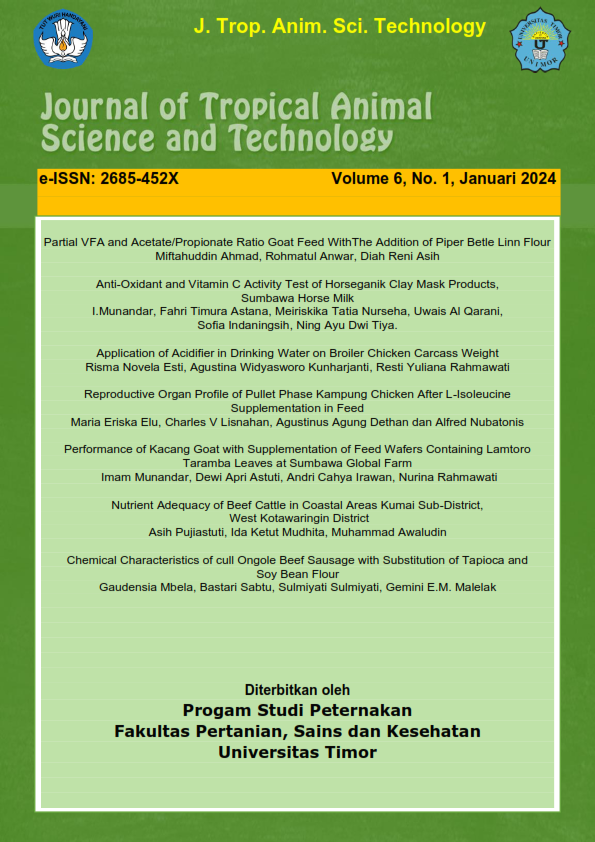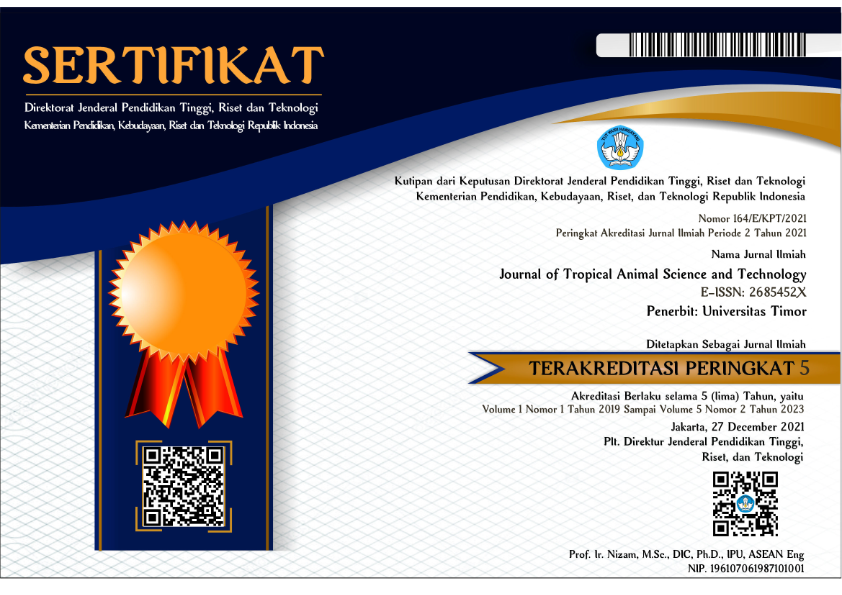Partial VFA and Acetate/Propionate Ratio Goat Feed WithThe Addition of Piper Betle Linn Flour
DOI:
https://doi.org/10.32938/jtast.v6i1.5483Keywords:
Defaunation, Betel Leaf, Partial VFA, In Vitro, GoatAbstract
The research aims to examine the effect of adding betel leaf flour to goat feed in vitro on partial VFA production and the acetate/propionate ratio. The research material used betel leaf flour, basal feed consisting of ammoniated rice straw and concentrate in a ratio of 40%: 60%. The media used for in vitro experiments was rumen fluid taken from 3 goats immediately after the goats were slaughtered. The research was designed according to a Completely Randomized Design (CRD) with treatments namely the addition of 0%, 5% and 10% betel leaf flour. The parameters observed were the production of acetic, propionic and butiic acids, as well as the ratio of acetic and propionic acids. The results of the study showed that the addition of betel leaves at the level of 0-10% in the feed had a very significant effect (P<0.01) on the production of acetic and propionic acids, while the production of butyric acid and the ratio of acetic and propionic acids had no significant effect (P>0.05) between treatments. Based on the orthogonal polynomial test, increasing the dose of adding betel leaf flour to the feed increased the production of acetic and propionic acids quadrater (P<0.01) with peak points at 6.97% and 7.19% respectively. It was concluded that the addition of betel leaf flour to goat feed based on ammoniated rice straw tested in vitro could increase partial VFA production but did not affect the ratio of acetate and propionate formed. The use of betel leaves as a defaunator to increase VFA production is most optimal at a dose of 7.19%.























